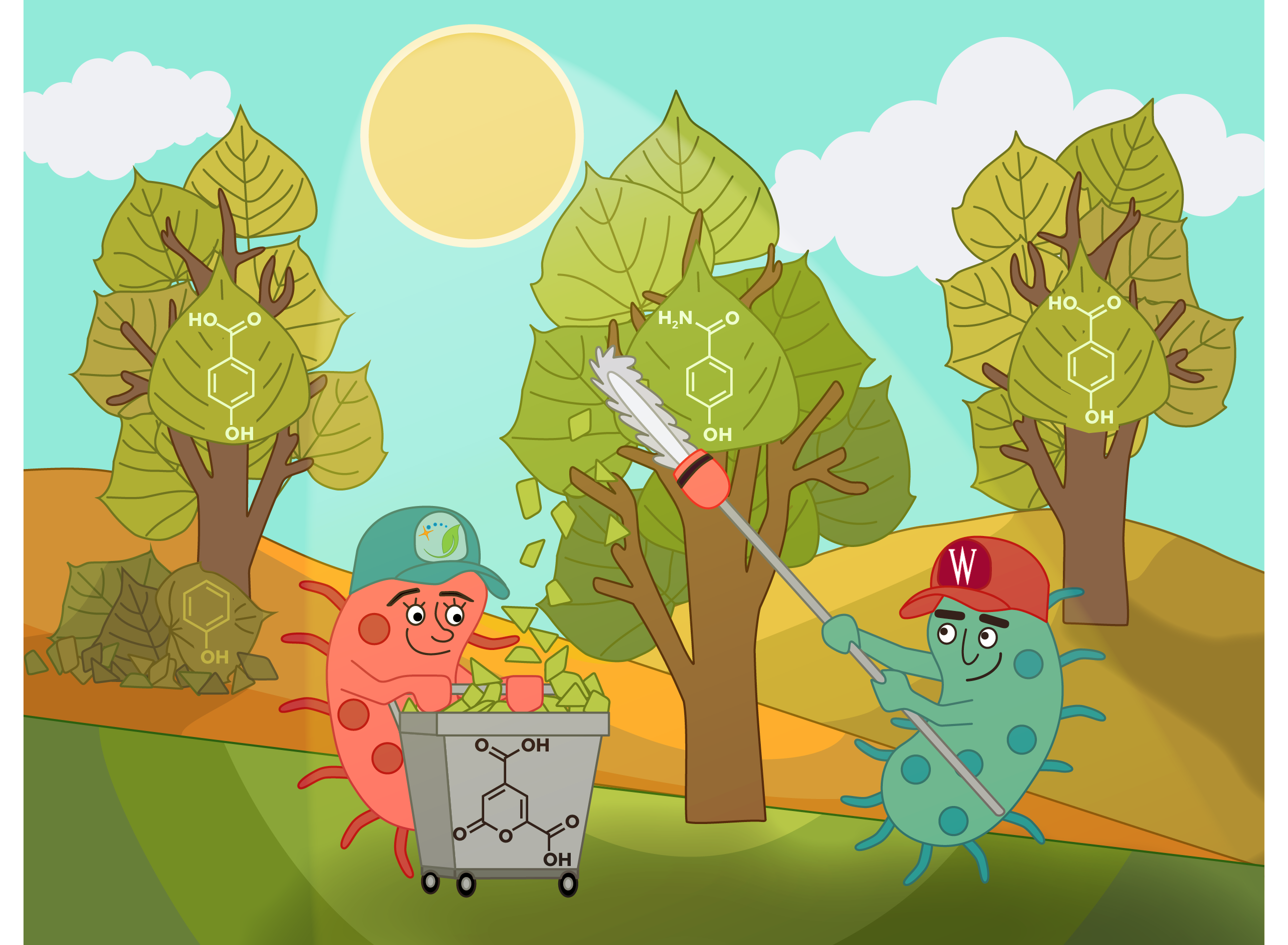
The Science
Making fuels and other products from plants requires treating the plant fibers to break apart sugars and other parts of the plant cell wall. The leftover liquid (or liquor) from the process must be treated to remove hazardous compounds before it can be safely thrown away. Therefore researchers have explored reusing spent liquor or extracting the organic compounds for use as fuels or industrial chemicals. Here, researchers identified phenolic compounds, a group of ring-shaped aromatic molecules, in spent liquor from a pretreatment process using ammonia dissolved in water. They evaluated how different metals used in the pretreatment process affected phenolic formation. Finally, they tested the use of microbes to convert the phenolics into chemicals used to make plastics, adhesives, and medicines.
The Impact
Bioenergy crops — including grasses, fast-growing trees, and crop residues — represent a potential source of home-grown fuels and industrial chemicals that can be grown on land not suitable for food crops. To make these biofuels cost effective, biorefineries must extract value from all parts of the plant, especially high-value chemicals.
Summary
Researchers used chromatographic fractionation, nuclear magnetic resonance, and liquid-chromatography mass spectrometry to characterize the phenolic content of spent liquors from aqueous ammonia pretreatment of poplar wood using five metal additives. They evaluated the potential to convert the phenolics into 2-pyrone-4,6-dicarboxylic acid (PDC), a building block of nylon and other plastics, using an engineered strain of the bacterium Novosphingobium aromaticivorans.
The main phenolics identified were phenol, p-hydroxybenzamide (pHBAm), and p-hydroxybenzoic acid (pHBA), of which pHBAm and pHBA were produced from the ester-linked p-hydroxybenzoates in poplar wood and phenol was produced from pHBA via decarboxylation. Compared to the control, metal additives reduced the phenolic recovery and phenol yield. Biotransformation of pHBAm to PDC was shown to be possible in the presence of pHBA, but not when pHBAm was the sole phenolic substrate. The phenol present was not transformed to PDC and didn’t inhibit PDC production. This is the first report on making PDC from phenolic amide using N. aromaticivorans.